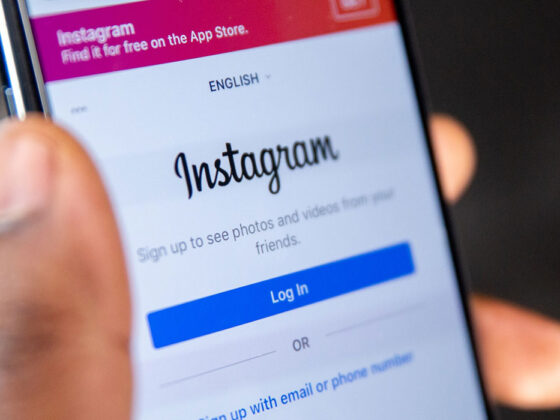Editor’s Note: Shout Out Studio has partnered with students from Miami University (Oxford, Ohio) to mentor, research and write a series of blog posts for shoutoutstudio.com. The authors are members of student-led group, East Bridge Consultancy, an affiliate of Alpha Kappa Psi, a professional business fraternity.
By: Grant Smith & Kristian Jennes
With the release of new technologies such as augmented reality over the years (or months) and the proven business usability of social networking platforms, the landscape of marketing strategies has evolved from cold selling to the use of digital channels. This new method provides a new experience for the customer, while contributing meaningful insights for organizations to utilize. A study done by Adobe interviewed a large group of marketing professionals from all facets to gain an understanding on best practices. One finding: Sixty-six percent of all marketers think companies won’t succeed unless they have a digital marketing approach. While larger organizations have multi million dollar budgets to invest in a digital strategy, small businesses feel left behind. There are many lessons that small businesses can learn from larger brands that can be implemented on a smaller scale to generate compelling content for consumers.
Although virtual reality is the more mainstream of the two, augmented reality has been embraced by the masses this past year with Pokémon Go, a mobile application which let’s users see characters in their own reality through their phone. This comeback of the 1990’s cartoon game shows businesses consumers are ready for the AR experience. In fact, over the past year, make up, furniture, and drug store organizations have heavily invested in AR to provide their customers with a new channel to view products. Walgreens has a mobile app called ‘Aisle411’ which immerses customers in new promotions and usually unseen products/deals while walking around the store. IKEA introduced an application that allows buyers to see what a certain piece of furniture would look like in their home. Sephora (cosmetics) now allows customers to see how a certain style of make-up would look on their faces simply by using their front facing camera. Within 8 weeks of the launch, Sephora’s application was bought over 1.6 million times.
Of course, larger brands like Walgreens have the resources to fund augmented reality style marketing strategies. But what about the small town brick and mortar shops- how can AR be utilized without breaking the bank? What they can learn from this craze is this: consumers are ready for a shopping experience that incorporates exploration through different channels other than walk in’s. Simple changes to websites such as including products that are not on the shelves or at a particular location can spark more time on your website and increased awareness of your brand. Augmented reality use by larger brands will also bring a vast amount of insights of consumer trends. Although actual augmented reality applications for organizations require heavy investments, the results and teachings that can be captured online are always free for small businesses to utilize.
Implementing a strong digital marketing strategy is crucial to any successful business, but in today’s cluttered online marketplace, providing consumers with an unforgettable experience can vault a company to the top of its industry. WestJet took the experience a step further, by blending a digital sharing element that guaranteed a large scope and huge awareness for years to come. By posting a video of employees granting passenger wishes, WestJet created a viral sensation that has racked up 41+ million views to date. The combination of an experience shared on a digital platform maximized reach while resonating emotionally with viewers, showing the value of taking a mixed approach to marketing.
Small businesses have not missed this trend and have already begun to take advantage of experiential marketing. One of the biggest ways that small businesses are capitalizing on this trend is by partnering with other small, local companies to provide consumers with a joint event that promotes both businesses and gives consumers a destination that will help the brand resonate with them. A common pairing is often micro breweries with local restaurants, both huge startup trends in large cities that a young demographic will flock to for live music, drink specials, or other events. Companies are utilizing their social media platforms as well as websites to help promote these experiences and gain brand awareness in the community.
One of the biggest hurdles faced in digital marketing is finding a way to resonate with consumers, while reaching the widest range of consumers as possible. When used effectively, contests can be a great way to address this challenge. Dove held an extremely successful contest that instructed users to post a picture of their friend with why their friend “represents real beauty” by filling in two reasons why they find them beautiful alongside their name. This user generated content not only built the brand’s goodwill, but was free marketing material posted on millions of Facebook walls for viewers to see.
While larger brands often use Facebook as the host for their contests, small business often don’t have the name recognition or following to get these types of promotions to go viral. However, one good way for small business to take advantage of this tactic is to sponsor contests for local sports teams or at large local events. This demonstrates community involvement, spreads brand awareness, and allows consumers to connect on a more personal level. While this takes a much more experiential approach, it can be promoted and marketed using social media and web platforms, blending the two marketing plans into one actionable strategy.
Adobe’s research on digital marketing presented another eye opening result: ‘less than half (48%) of professionals who consider themselves primarily digital marketers feel highly proficient in digital marketing.’ Although the digital strategy has shown success, it is a task that consists of significant resources, time, and constant change. Small businesses cannot be intimidated by this fact, with a clear direction for obtainable goals,consistent strategy, and the desire to constantly learn about consumers trends, one can implement a meaningful marketing campaign that models those of big businesses. While a new technology such as augmented reality can add value to an organization, it is unrealistic for smaller firms to have the ability to research and develop something this expensive and time consuming. Instead, small businesses can position themselves to learn. By gaining insight, one can change the layout of their store, add trending products to their shelves, and provide features on the their website catered to consumer needs while being cost effective. One of the most important aspects of digital marketing is sending a consistent message to consumers, regardless of how they are viewing content. This means that a small company needs to ensure that mobile applications, web pages, and social media accounts are offering the same features, same information, and same usability. To grow a small organization into one with resources to fund large scale digital marketing strategies, owners/managers must stay up to date on trends and take advantage of the strong customer relationships that a small organization can establish. By truly understanding the target market one can decide which digital strategy to model.




